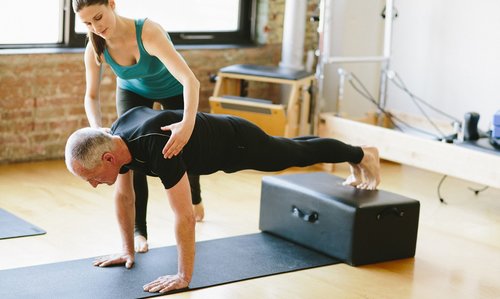
The mind, when housed within a healthful body, possesses a glorious sense of power.” – Joseph Pilates
What is Pilates for rehabilitation?
You may know Pilates as a popular type of fitness training that has helped many sculpt their bodies as well as gain strength and flexibility. However, pilates is rapidly gaining recognition from orthopedists, physical therapists, and athletes as a highly effective rehabilitation option for musculoskeletal and neuromuscular injuries and diseases.
How Myofascial Release Works:
Restrictions in myofascial itself can cause minor to severe pain. Myofascial restrictions can also compress adjacent structures such as nerves, blood vessels, joints, and more, which can also cause pain as well as secondary body malfunctions such as misalignment of joints, nerve pain, swelling, and more. Myofascial release can improve viscoelasticity, optimizing functions of myofascial and their adjacent structure.
Pilates original purpose was actually to rehabilitate injured soldiers and prisoners during World War I. Joseph H. Pilates designed the exercise regimen and tower apparatus so soldiers could overcome injury and strengthen themselves from their hospital beds. The purpose of each movement is to develop the muscles necessary for a strong, balanced and flexible body, particularly within our cores.
How Pilates For Rehabilitation Works
This focus is particularly important for rehabilitation as many injuries are caused muscular imbalances present in the way we move everyday. Our posture when we seat at a work desk, the way athletes overuse some joints while practicing, or simply the way we bend over or lift objects can all put strain on some muscles, throwing our entire skeletal alignment off balance. An excellent example of this imbalance can be drawn from the 80% of Americans who experience debilitating back pain. Sitting for long periods of time, especially with incorrect posture, strains the muscles in our back while weakening our pelvic muscles. This can lead to numerous injuries, including back spasms, chronic pain, and nerve compression. Having tight or strained muscles not only makes daily life more but also makes our body much more susceptible to orthopedic injuries like tears, tendonitis, or worse. Pilates corrects such imbalances by reaching our deep core muscles which support our spine and pelvis, the structures necessary moving our entire bodies.
Physical therapists have often incorporated pilates techniques into their patients’ regimens. Now specialized pilates instructors at Directions Physical Therapy & Acupuncture will focus on rehabilitative medicine and build entire pilates routines for physical and sports therapy.
Pilates for rehabilitation is very different from pilates for exercise. There are many different pilates exercises that can aggravate certain injuries rather than heal them. Guidance from an experienced and specialized pilates instructor is important not only because they will work with physical therapists, but because it is essential that exercises and stretches be tailored to your unique capabilities and injuries. While many patients use very basic pilates forms to begin rehabilitation, those focused on strengthening after an injury or athletes with experience will require more advanced techniques.
At Directions Physical Therapy & Acupuncture, the focus on mobility, flexibility and strength through a full range of motion can help restore your injured body to a healthy state. The Pilates Instructor will work directly with the Physical Therapists to evaluate your diagnosis and build a personalized pilates rehabilitation program for you.
Conditions and Injuries Treated With Pilates for Rehabilitation
Patients who undergo rehabilitative pilates at Directions Physical Therapy & Acupuncture often have extreme success in treating injuries such as these:
Pilates Vs. Conventional Physical Therapy
Just like physical therapy, you will need to work with an instructor throughout your rehabilitative process. However, pilates noticeably aids in movement and can be practiced at home as well as taken further after an injury has healed. This leads to increased confidence levels which helps patients take over their own treatment and improve overall wellness. This positivity has unparalleled benefits for healing and achieving the best possible physical fitness.
How many Pilates for rehabilitation sessions will I need?
The number of sessions you take with us is up to you. At Directions, our certified, licensed Pilates instructor will work with you until you’re pain-free and on a path to healing. After that, many patients opt to continue their sessions in an effort to prevent future recurrence, as core strengthening is a proven method of injury prevention.
(C) Copyright 2023 - Directions Physical Therapy & Acupuncture. All rights reserved.
